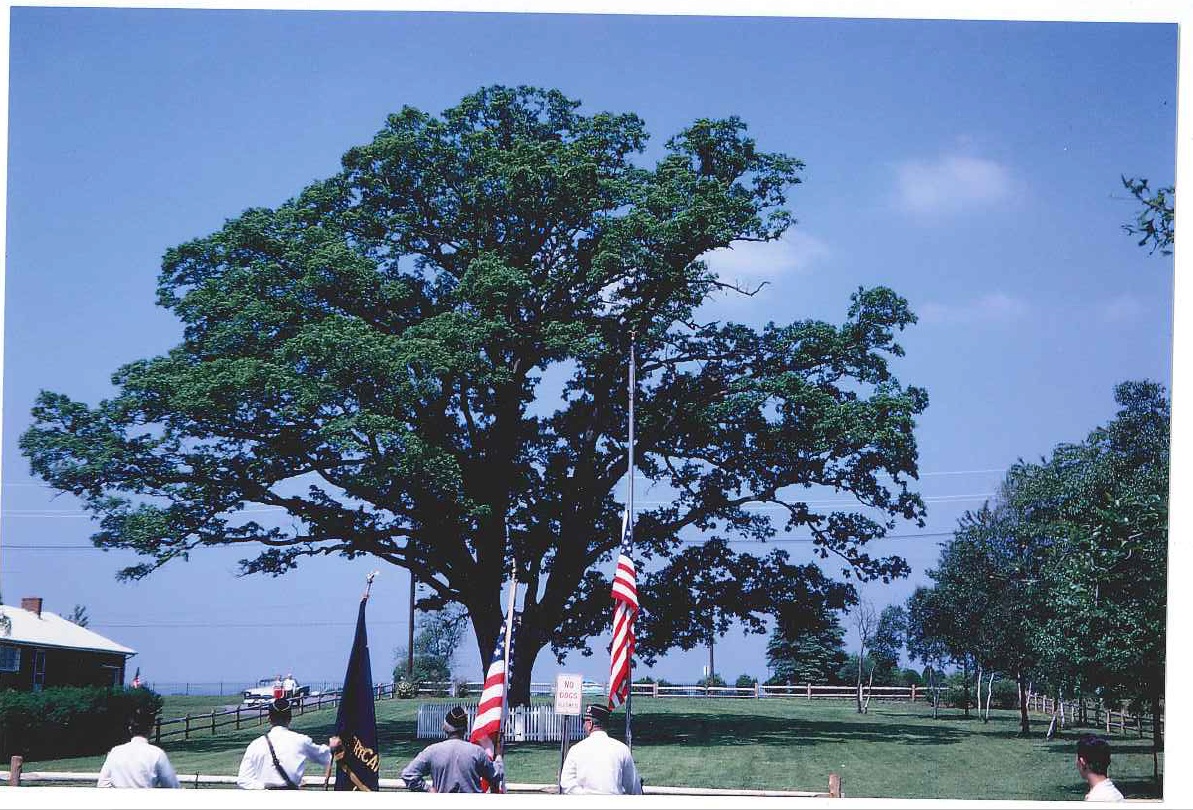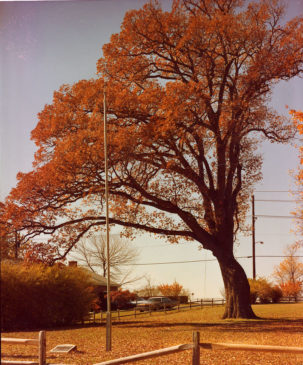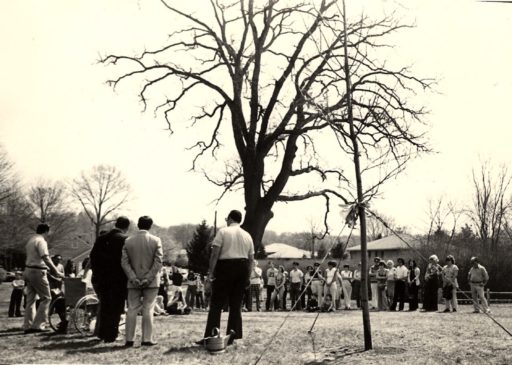
[slideshow_deploy id=’899′]
Washington Oak Park still exists in Emerson, but the one-time focal point of this land, a centuries-old oak tree, has been gone for decades.
In 1959, the Daughters of the American Revolution presented a bronze plaque to the Borough of Emerson to be displayed at the site. It read: “This plaque commemorates this area that served as General Washington’s encampment. Legends tell that under this friendly tree, Washington and Lafayette met and planned. This oak was believed to be 150 years old during the Revolutionary War period.”
It makes for a great tale, but whether or not George Washington and the Marquis de Lafayette talked shop under an oak tree in Emerson is a matter of speculation. However, it certainly is true that troops from both the British and American sides were in Emerson at various times.
In his 1964 “Background History of the Borough of Emerson,” historian Howard Durie wrote, “The Emerson area, crossed by a north and south thoroughfare ‘the road through Kinderkamack,’ was not the stage for any fighting, but it did see both American and British troops on more than one occasion and mostly to the detriment of the inhabitants. Its farms were plundered by friend and foe for food and the farmers were forced to supply it, sometimes getting paid and sometimes not.”
As Continental soldier Major Samuel Shaw expressed in his journal in August of 1780, while in Bergen County: “We call this foraging, but it is only a gentle name for plundering.”
He added, “Two motives in the present instance render foraging necessary; first, to prevent the enemy from drawing these supplies when they should feel themselves pinched, and to support our own troops who were three days without meat before the measure was adopted and have now no other animal subsistence but what is obtained in this way.”


In the late summer and early autumn of 1780, Gen. Washington’s troops were encamped on the hill north of Soldier Hill Road and west of Kinderkmack Road. In addition to Washington, Major Gen. Lafayette, Major Gen. Nathanael Greene and Brigadier Gen. Enoch Poor also visited the area during this encampment.
War Claims for August and September of 1780 show some of the things that troops “foraged” from Emerson residents. Most of these included farm animals like cows, sheep, horses, ducks, chickens and pigs; beehives, as honey was a common sweetener in the 18th century; and bushels of buckwheat and corn. However, the troops took more than just food. Over at James Van Horn’s place, the Continentals took a gun, a sword and a Psalm book. At David Ackerman’s place on Kinderkamack Road, soldiers raided the laundry line and stole blankets and linens. At his next door neighbor Elizabeth Cooper’s house, the soldiers left with a slave, a 34-year-old black man whom Cooper valued at 70 pounds (the currency of the time). The soldiers took cash from John Ackerman to the tune of 25 pounds in New York currency—no small amount for the time.
On Sept. 20, 1780, the Continental Army returned to Orangetown, N.Y.
“By that time the whole countryside had been well cleaned of available food,” Durie wrote. “The Emerson residents, like those elsewhere, had to wait for new crops and stock, aside from what some may have managed to hide.”
As for that venerable old oak tree, it finally came down during a storm a couple decades ago. Local historian Bill Wassmann had an opportunity to count the rings, and recalls that he counted 241 of them. If each ring represents a single year’s growth—well then, the tree certainly might have been standing when Washington and Lafayette graced this land, but the young oak probably would have escaped their notice.
—Kristin Beuscher
